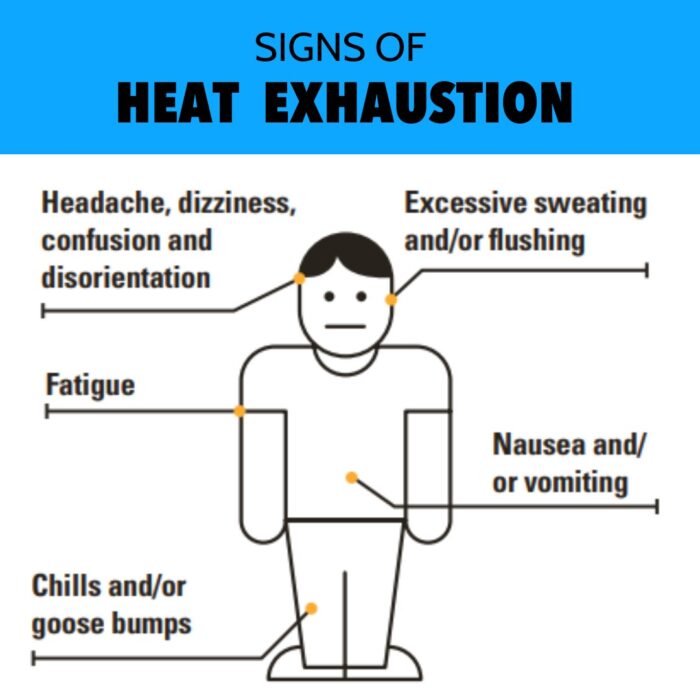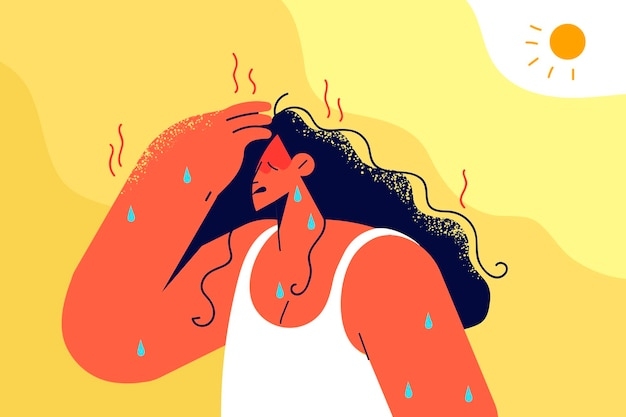It’s not just cold weather that can make you unwell, illnesses thrive in hot conditions too. According to experts, if you experience fatigue, nausea, or headaches on a sunny day, it can be heat exhaustion.
Among these, heat-related illnesses are a significant concern, varying in severity and demanding careful attention. Heat exhaustion, in particular, is a condition that shouldn’t be taken lightly due to its potential complications. Here’s a guide to covering its symptoms and how long it typically lasts.
What Is Heat Exhaustion?
Heat exhaustion is part of a group of heat-related illnesses. This includes various conditions like heat cramps, heat rash, heatstroke, rhabdomyolysis, and heat syncope, all stemming from the body overheating.
This overheating can occur due to exposure to high temperatures, especially when coupled with humidity or physical exertion, as outlined by the Mayo Clinic.
Your body’s temperature is profoundly influenced by its surroundings. The relationship between your body’s temperature and the environment’s is referred to as the “core temperature,” notes the Mayo Clinic.
Typically, the human body maintains a core temperature of around 98.6 degrees Fahrenheit.
Sweating is your body’s mechanism for temperature regulation. In hot conditions, you tend to sweat more as your body strives to cool down. However, excessive sweating can disrupt this cooling process, throwing off your body’s balance.
Sweating leads to the loss of fluids containing essential water, nutrients, and salts, which are crucial for proper bodily functions. Inadequate replacement of these lost fluids can result in a range of problems, including dehydration and heat exhaustion.
This condition can affect anyone, but certain factors can heighten the risk, such as age, alcohol consumption, medications, and pre-existing health conditions.
Children and the elderly are particularly vulnerable to being exhausted by heat because they are more susceptible to dehydration and less efficient at regulating body temperature.
Read more here: Feeling Down During Summer? It Might Be Summertime Depression
Alcohol consumption can also increase the likelihood of heat exhaustion. Alcohol can lead to dehydration and hinder the body’s ability to regulate temperature, according to the Cleveland Clinic.
Certain medications, especially those causing fluid loss (like diuretics), and health conditions that lead to excessive fluid loss, such as diabetes, can elevate the risk of heat exhaustion.
Recognizing Heat Exhaustion Symptoms
Both the Mayo Clinic and Cleveland Clinic outline the common symptoms of heat exhaustion:

- Dizziness, lightheadedness, or feeling faint
- Headache
- Fever around 100 degrees Fahrenheit
- Fatigue
- Nausea
- Muscle cramps
- Excessive sweating
- Cool, clammy skin with goosebumps
- Swollen extremities (hands, feet, ankles)
- Rapid heartbeat
Duration of Heat Exhaustion: If your symptoms worsen within an hour, seeking medical attention is crucial. Ignoring heat exhaustion can lead to a life-threatening condition called heatstroke.
Recovering from heat exhaustion typically takes between 24 to 48 hours, as noted by Mount Sinai. If your condition doesn’t improve within this timeframe, it’s advisable to consult a healthcare professional.
In conclusion, understanding heat exhaustion and its symptoms is vital for staying safe during hot and sunny days.
Read more here: Do Heat Waves Affect Mental Health? Studies Revealed
By recognizing the signs and taking appropriate action, you can ensure a quicker recovery and prevent more severe complications. Stay hydrated, stay informed, and prioritize your well-being, no matter the weather.








Leave a Reply
You must be logged in to post a comment.